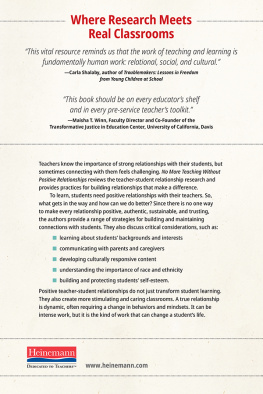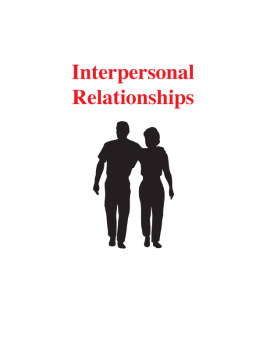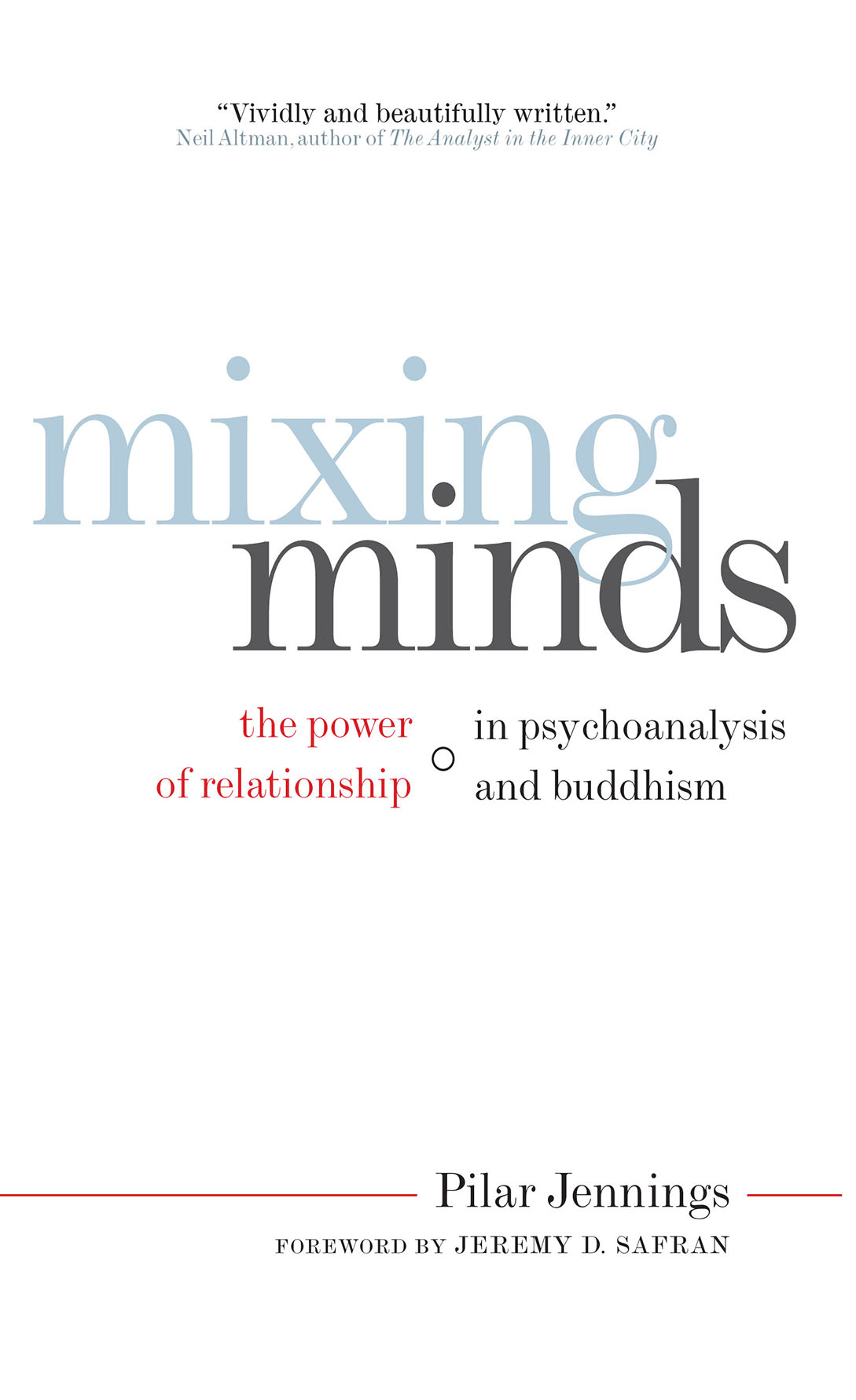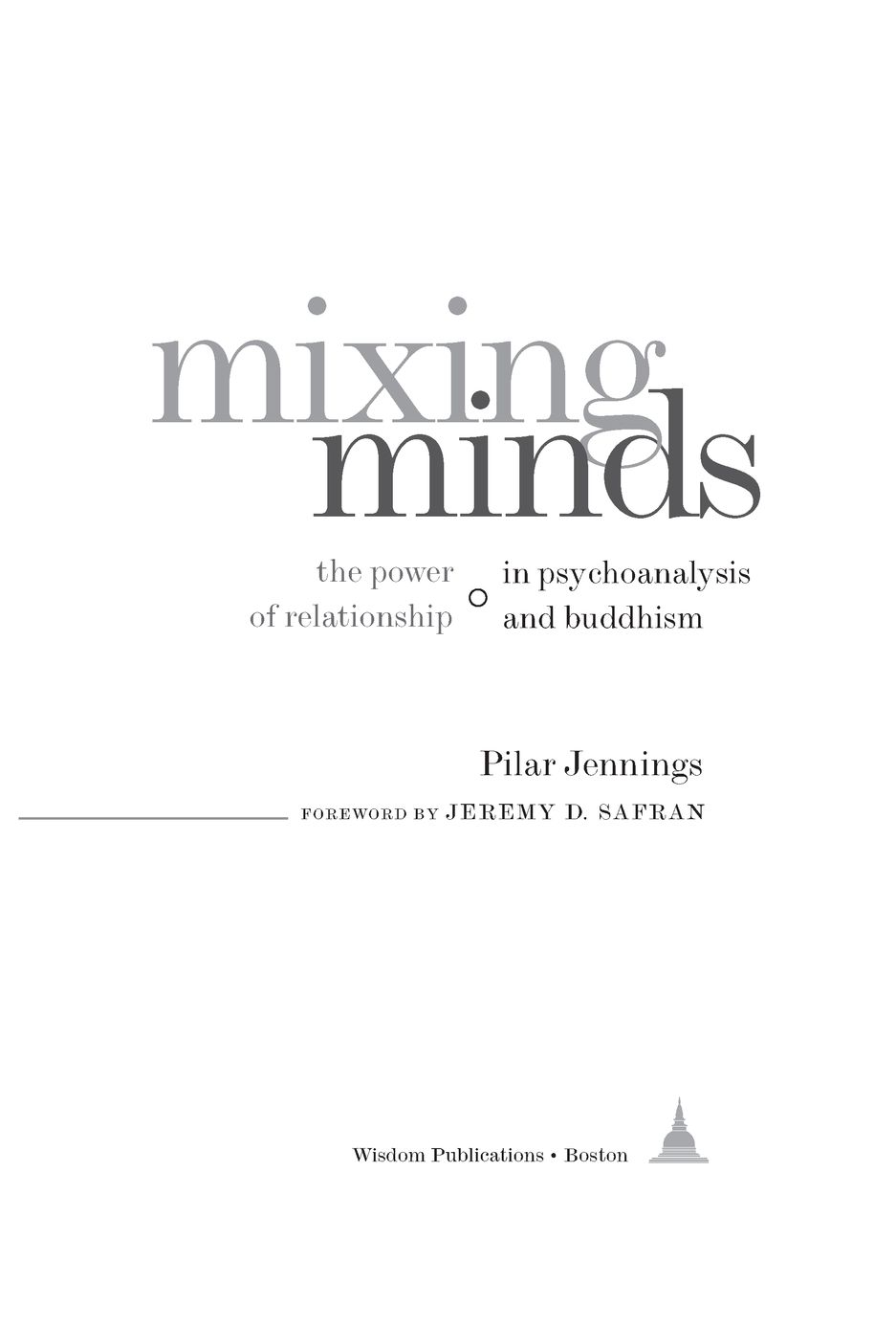Table of Contents
foreword
THE ENCOUNTER between Buddhism and Western psychotherapy has a long history. Carl Jung had an early interest in both Western and Eastern mystical traditions, and in 1954 wrote a psychological commentary for Walter Evans-Wentzs translation of The Tibetan Book of the Dead (first published in 1927). Other influential psychoanalysts followed suit: in the 1950s and 1960s Erich Fromm and Karen Horney took a particular interest in Zen Buddhism. While in retrospect we can see that this interest continued to percolate in the culture at large, in many respects it disappeared from the mainstream scene and went underground within psychoanalysis. In the 1990s as Buddhism became more thoroughly assimilated into Western culture, and a generation of authors who came of age in the 1960s began to emerge, the interest in Buddhism by psychoanalysts began to resurface. A series of books on Buddhism and psychoanalysis were published by authors such as Jack Engler, Mark Epstein, Jeffrey Rubin, John Suler, Anthony Molino, and Barry Magid, and isolated articles began to appear here and there in professional and popular journals.
At the same time, a certain momentum of interest began to emerge among behavioral and cognitive therapists as well. Theorists and researchers such as Marsha Linehan, Alan Marlatt, Jon Kabat-Zinn, and Steven Hayes began to incorporate principles of mindfulness into their therapeutic approachesand these drew increasing attention. I remember attending a panel on mindfulness at the Association for the Advancement of Behavior Therapy (AABT) in the early 1990s and I remember my surprise that what seemed like esoteric fare for an ostensibly conservative organization like AABT was so packed that there was standing room only. My second surprise came when one of the panelists asked the audience how many of them meditateand over ninety percent of the audience members raised their hands.
While the momentum of interest in the relationship between Buddhism and psychoanalysis has continued to develop at a steady pace, I think it is fair to say that Buddhism, or more specifically mindfulness practice, has taken cognitive-behavioral therapy by a storm. Since the first empirical studies came out demonstrating that mindfulness practice can reduce relapse in recovered depressives, a slew of studies have come out demonstrating the effectiveness of mindfulness practice in the treatment of a range of psychological disorders and books on what is referred to as mindfulness-and-acceptance-based approaches to cognitive-behavioral therapy are proliferating. Mindfulness has more than gained acceptance within mainstream therapy; indeed it has in some respects become the leading edge of the mainstream.
The assimilation of Buddhist thinking into psychoanalytic thinking, while continuing at a steady pace, has been a slower and more subtle processand I think it is worth speculating about the reasons for this. Because of the emphasis on skills-training and self-help technology in behavioral and cognitive therapy, the process of adapting the technique of mindfulness practice and then testing it empirically is a fairly natural and straightforward one. However, I think that the popularity of mindfulness practice among cognitive-behavioral therapists is due to more than this. Traditionally the emphasis in mainstream cognitive therapy has sometimes been on changing or controlling feelings by changing ones thinking. This leads to the paradoxical situation in which the goal of self-acceptance needs to be achieved through a type of self-control. The assimilation of the principles of awareness and acceptance (embedded within mindfulness practice) has led cognitive-behavioral therapy to a subtle paradigm change that helps to negotiate or transcend this paradox.
Although psychoanalysis does have its techniques, it is on the whole less technologically oriented than cognitive-behavioral therapy. In some respects psychoanalysis is thus more similar in type to Buddhism as a whole, in that both are complex and comprehensive worldviews and philosophical systems, each composed of multiple schools of thought and practice. Theoretical and philosophical debate is the order of the day within both traditions, and it is only natural that any real contact between them will involve conversation at broader levels as well.
In addition, psychoanalysis from the beginning has had an interdisciplinary character to it. It both influences and is informed by areas such as cultural and historical studies, anthropology, sociology, and political science. Increasingly over time psychoanalysis has become particularly attuned to the cultural context that gives rise to various theoretical developments as well as the impact of those developments on the culture. While early forays by psychoanalysts into Buddhism to some extent had a natural tendency to emphasize and idealize certain tenets of Buddhism as antidotes to the rigidity and other shortcomings of psychoanalytic orthodoxy, a new stage in the dialogue between Buddhism and psychoanalysis is emerging that is more nuanced and sophisticated in nature.
When I edited the anthology Psychoanalysis and Buddhism: An Unfolding Dialogue in 2003, I was hoping that the essay and commentary structure of the book would play some role in catalyzing this new stage of dialogue. Since that time Ive been gratified to see a number of important new books coming out that have contributed to this growing dialogue. Examples include: Mark Unnos Buddhism and Psychotherapy Across Cultures , Robert Langans Minding What Matters, Barry Magids Ending the Pursuit of Happiness, and Mark Epsteins Open to Desire. Of particular note is Harvey Aronsons Buddhist Practice on Western Ground, which does a superb job of embedding the exploration of the relationship between Buddhist practice and psychotherapy in a cultural context, and highlights the strengths and limitations of both approaches.
When Josh Bartok at Wisdom Publications first asked me to read a draft of Mixing Minds, I was somewhat hesitant because of pressing work commitments. After reading the first few pages, however, I was hooked. And after rereading it before writing this foreword, I am even more enthusiastic. With this remarkable book, the dialogue between Buddhism and psychoanalysis has finally come of age. Pilar Jennings writes from the perspective of one who has been deeply steeped in these two great wisdom traditions for many years, and who has a rich and nuanced understanding of areas of convergence, divergence, and potential synergy. By taking into account both cultural differences in the origins of these two practices as well as differences in emphasis (spiritual/universalistic vs. psychological/ personal), Jennings is able to highlight the strengths and limitations of both traditions, as well as potential stumbling blocks along the path of practice for Western Buddhists. In this way she deepens our understanding and appreciation of both traditions, and clarifies the way in which they can complement one another. In a voice that is personal, humorous, yet at the same time wise and sophisticated, Jennings takes us on a fascinating and deeply rewarding voyage of discovery. Sit back, relax, and enjoy.
Jeremy D. Safran
preface
A FEW YEARS AGO my Buddhist teacher asked me if I would be the personal driver for a senior teacher in our Tibetan lineage during his upcoming visit to New York City. I was flattered but also concerned about taking so much time from my various professional responsibilities. After having agreed, I spent the first day driving the








